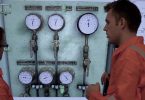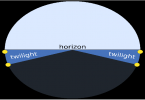Core and maintenance of pilot ladders and hoists :
Before including the pilot ladder and hoist in a maintenance schedule an officer should cheek that both comply with the following regulations :
SOLAS 1974, chapter V, safety of navigation, regulation 17, The Merchant Shipping (Pilot ladders and hoists) Regulation 1987.
In particular the following points should be considered when making an initial inspection of the pilot ladders :
- The loader must be in one continuous length. The practice of having a short ladder for the loaded passage, which was then shackled to another length to make a long ladder for the light ship passage is not permitted.
- The steps must be made of hardwood or other material of equivalent strength and the four lowest steps may be of rubber or similar material.
- The steps must be in one piece and if made of wood must be knot free. the almost have an non-slip surface and the dimensions should be not less than 480mm long, 115mm wide, and 25mm in depth, non slip grooving is not included in these dimensions.
- All the steps should be the same distance apart, the equal spacing should not be less than 300mm and not more than 380 mm and they must be secured in such a manner as to remain horizontal.
- Cheek the ladder for replacement steps as no ladder is permitted to have more than two replacement steps which are secured in any way that differs from the original method it the replacement steps are secured to the side popes by grooves, such grooves must be in the long side of the steps.
- Spreaders, which should be of the same material as the rest of the ladder and between 1.8 and 2 metres long, should be at such interval as to prevent the ladder from twisting. However, the fifth step from the bottom should be a spreader and the intervals b/w any spreaders must not exceed nine steps.
- The side ropes must consist of two continuous manila ropes on each side with a diameter of not less than 18mm.
Any ladder which does not comply with SOLAS standards must be replaced as soon as possible the regulations also certain artain safety provisions regarding the rigging use, and access from pilot ladders and the crew should be instructed on the following procedures.



